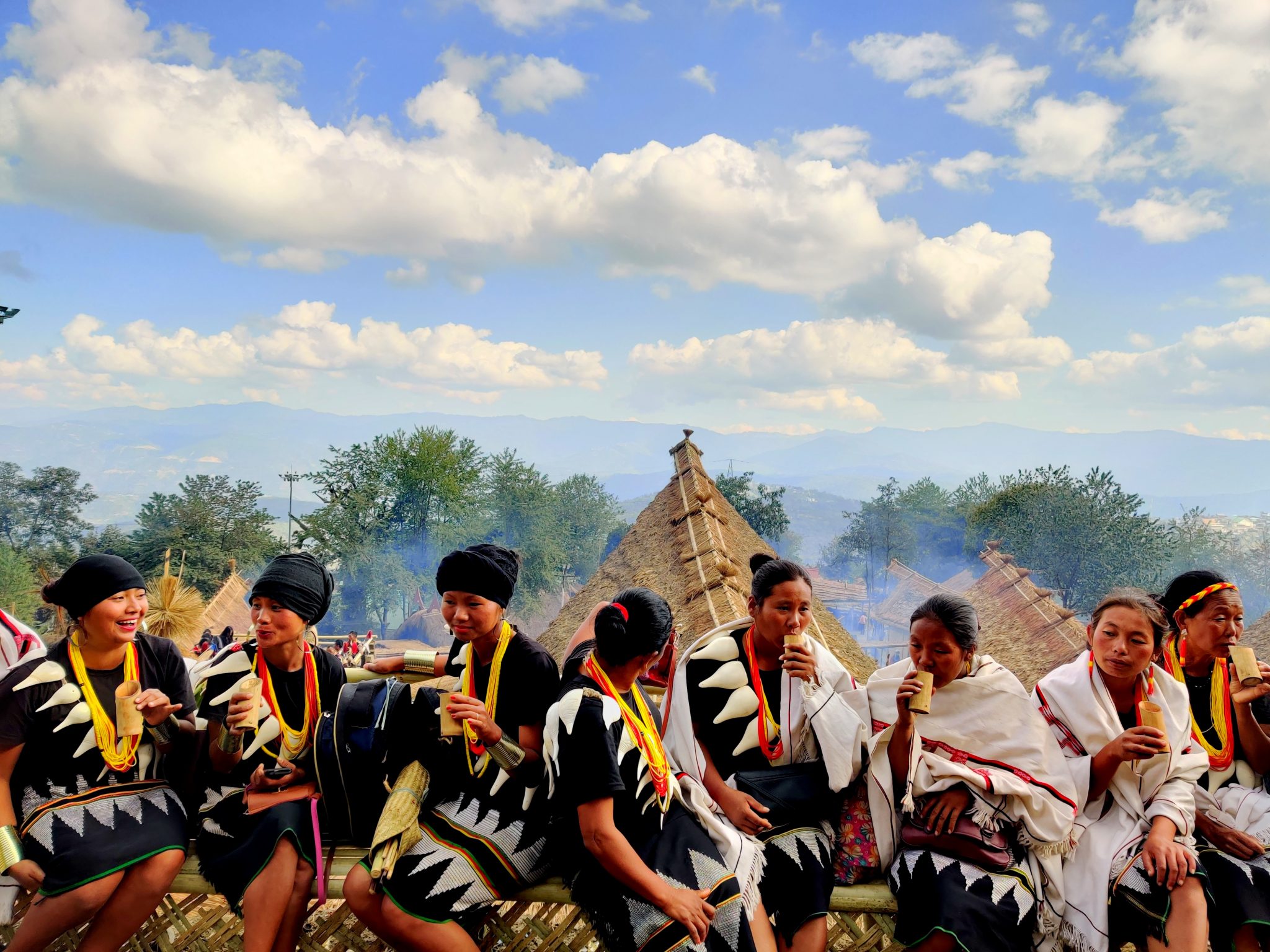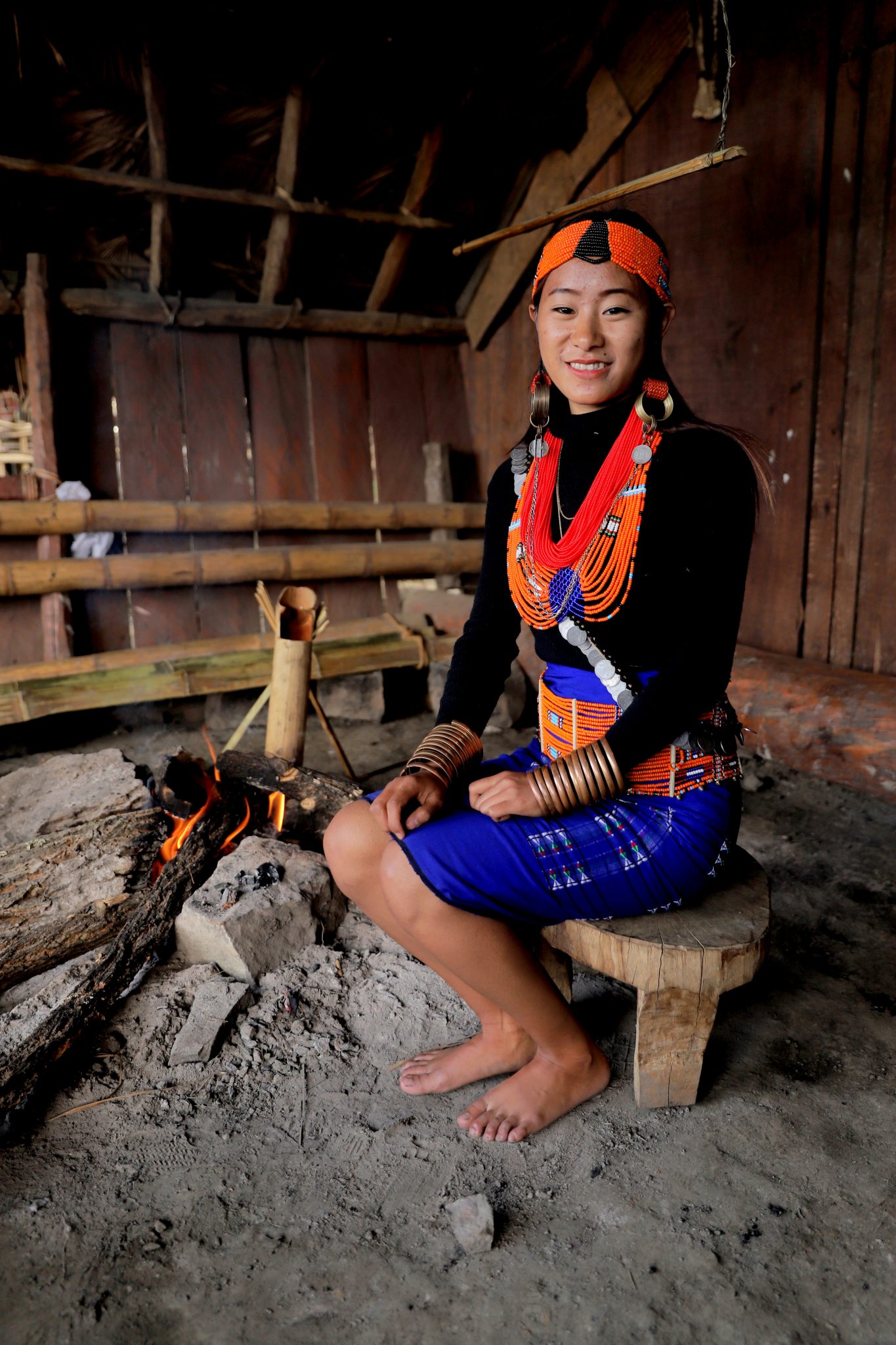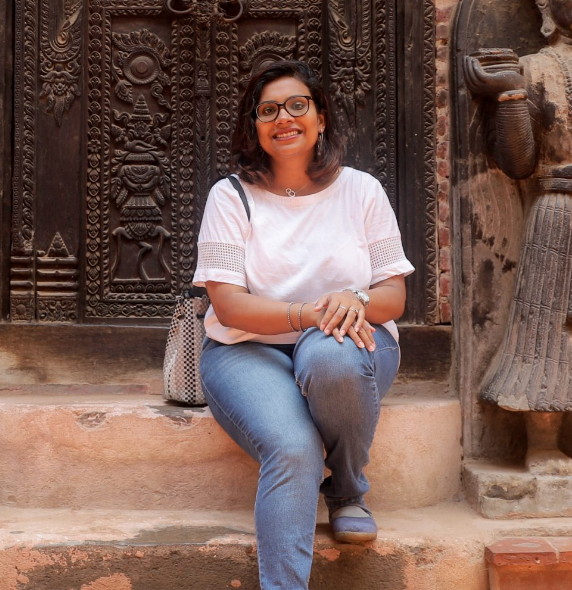Known as the ‘Festival of Festivals’, the Hornbill Festival is organized by the Government of Nagaland to encourage inter-tribal interaction and to promote the cultural heritage of the state. This incredible annual jamboree takes place from December 1 to 10, every year, at Naga Heritage Village, Kisama, which is about 12 km from Kohima. All the tribes of Nagaland take part in this festival and the main aim is to revive and protect the rich culture of Nagaland and display its extravaganza and traditions.
This year, we got the chance to experience the Hornbill Festival 2019. Here’s a glimpse of the colorful mixture of dances, performances, crafts, parades, games, sports, food fairs, and religious ceremonies.
What exactly is the Hornbill Festival and why is it named so?
The Great Indian Hornbill is a revered bird across all tribes of Nagaland, featuring widely in their songs and legends. Needless to say, that’s where the Hornbill Festival derives its name from!
As mentioned earlier, the Hornbill Festival is a 10-day cultural extravaganza celebrating the age-old traditions of the 16 tribes of Nagaland through art, dance, music, and food.
It is organized by the State Government of Nagaland and is the oldest festival of its kind among all the states of Northeast India, having started in the year 2000. The festival both exposes the culture and tradition of tribal peoples and reinforces Nagaland’s identity as a unique state in India’s federal union.
Sadly, excessive hunting has pushed the Hornbill to near extinction in Nagaland. Exposure to the outside world (thanks, largely to the easy availability of the internet) has led to awareness and started a dialogue on conservation within the Naga tribes. The headhunting is, of course, a banned practice now. In most tribes, this practice ended several generations back. But back then, headhunting was an important game and a matter of serious pride. A head hunter was the most respected member of the tribe.
Even today, nearly all tribesmen have Hornbill feathers on their headgear, while some have Hornbill beaks as well.

Former hunters are turning into protectors now and the Government has imposed serious regulations on it. These efforts are slowly showing results with hornbill sightings in the wild being reported in the remote forests of Nagaland – though we weren’t lucky enough to spot any!
Why do you need an Inner Line Permit (ILP) to visit Nagaland & how to get it?
The Inner Line Permit (ILP) is an official travel document issued by the Government of India to grant inward travel of an Indian citizen into a protected area for a limited period. The main objective of the ILP system is to prevent the settlement of other Indian nationals in Nagaland (and other states of the Northeast) to protect the indigenous population.
The ILP for Nagaland can be procured from the Nagaland House located in New Delhi, Kolkata, Shillong & Guwahati. However, this year, a portal to obtain the ILP online has been set up and you can easily apply for it.
How to reach the Hornbill Festival & where to stay?
The Hornbill Festival showcases a mélange of cultural displays under one roof and the best ways to reach the Naga Heritage Village in Kisama are as follows:
– Take a flight/ train to Guwahati, Assam (which can also be termed as ‘The Gateway of Northeast’).
– From Guwahati, there are several trains for Dimapur, Nagaland.
Alternatively, you can also take a direct flight to Dimapur.
– From Dimapur, you can hire a taxi to Kohima. Shared cabs are also available, which would cost around 300 INR for 1 person. Otherwise, a small cab would cost around 1500 – 1800 INR. The distance between Dimapur to Kohima is about 73 km.
– Taxis are easily available throughout the day from Kohima to Kisama, especially during the days of the Hornbill festival. It’ll cost around 500 INR for a small cab and drop you right at the gate of the Naga Heritage Village, where the festival takes place.
Entry Fee – Tickets are available at the gate for 20 INR per person, and an additional cost of 50 INR for the camera!

The Hornbill Festival is the most popular time to visit Northeast India and the busiest tourist season for Nagaland, so it’s better to book your stay as soon as you plan your trip! We stayed at Camp David in Kigwema, which was organized by IndiaTrails. It was a great place to stay since it’s just about a KM away from the main festival area and we could walk to the venue.
There were several other camps as well, which we spotted on the way! The comfort and facilities that they provide depend largely on how much they charge. Most of the campsites are geared more or less for the backpackers, hence it is advisable that you don’t look for a luxurious retreat out there!
If you’re planning to stay in Kohima, then you can find more options – including decent hotels and hostels. But in that case, you’ll have to count the travel time and additional cost for daily transportation as well. You can also look for homestays around Jakhama, which is a nearby village.

How many days should you spend at the Hornbill Festival and what are the main events to attend?
Well, if you’re a photography enthusiast and have enough time in hand, we would surely suggest you to spend 10 days there and soak in the cultural vibes. It’ll give you the opportunity to attend most of the events (each of them is unique & starkly different from the other) and capture the beauty of the Naga tribes.
However, we were there for 4 days and tried to cover as many events as we could! The festival highlights include the traditional Naga Morungs* exhibition and the sale of arts and crafts, food stalls, flower shows, the Rock Music Concert, the Miss Nagaland Beauty Contest, traditional archery, Naga wrestling, indigenous games, etc.
The events start mostly by 10 AM and continue throughout the day until it gets dark and cold! The Rock Concerts used to be the last event of the day, and the entire stadium went crazy as the bands (Indian & International) took over the stage!
*What really are the Morungs?
The word ‘morung’ means ‘youth dormitory’ and it’s a self-governing body aiming to protect the village and train men to channel fertility into their community. It was a tradition for the Nagas that all the boys after they reached the age of puberty were required to enter the morung of their particular tribe. Under the umbrella of the village authority, this institution has its own leaders and rules that are still relevant in this 21st century!
There are 16 tribes – Angami, Ao, Chakhesang, Chang, Kachari, Khiamniungan, Konyak, Kuki, Lotha, Phom, Pochury, Rengma, Sangtam, Sumi, Yimchunger and Zeme-Liangmai (Zeliang). The Naga Heritage Village has set up 16 makeshift morungs, for the travelers to sneak in, during the Hornbill Festival. The makeshift morungs resembling bamboo huts have a fire raging outside to combat the cold weather in the month of December and people of all ages were found sitting around it, sharing rice beer and some delicious smoked pork. We would often hop from one morung to another, to observe the different traditions of the tribes (as well as to click some photographs!).
What else can be done in Nagaland apart from attending the Hornbill Festival?
Well, if you’re planning to visit Nagaland during the rest of the year, you can definitely plan a lot of things and explore the various districts of the state. But in case you’re there in December during the festival, you can club a trek to Dzukou Valley or spend a couple of days in Khonoma, or maybe explore Kohima, the state capital.
Dzukou Valley, located within the borders of the states of Nagaland and Manipur, is known for its picture-perfect landscape! With thousands of green hillocks appearing as an undulating carpet, Dzukou can be termed as ‘The Hidden Heaven’ of the Northeast!
Kohima is a nice small town that can be covered in a couple of days. The World War II Cemetary is surely a place worth visiting, other than the War Museum, Bamboo Market, Night Market, etc.
Khonoma, known to be the First Green Village of Asia, is a quaint village where you can spend a night at a homestay, and hop around the rice terraces during the day!
Here’s our itinerary and all that we did in a week’s span in Nagaland, in December 2019:
December 7 – 10: Traveled to Kisama, stayed at Camp David, and attended the Hornbill Festival.
December 10 – 12: Traveled to Vishwema and did the Dzukou Valley Trek.
December 13: Trekked back, traveled to Khonoma & stayed at a homestay there.
December 14: Explored Kohima and traveled back to Dimapur.

To say the least, the cultural vibrancy of Nagaland will definitely stay with us for years to come and the diversity that we’ve witnessed is something that we can never really put in words!
Back in 2016, we had planned to travel to Nagaland for the Hornbill Festival, but all of a sudden, the Government of India announced the demonetization of all ₹500 and ₹1,000 banknotes, and our trip got canned! This year, during Durga Pujo, we were out for lunch with friends, when we randomly started the conversation of exploring the Northeast – which finally led to the actualization of this trip! Sometimes, that’s how things happen – wonderfully, when you least expect it. We would have probably attended it some other time, years later, but thanks to our dear friends (Snigdha, Antara & Navonil) for showing enough enthusiasm and joining us in this 8-day-long journey across Nagaland!
If you’ve also attended the Hornbill Festival in Nagaland, let us know about your experiences in the comments below! We’d love to hear back from you. And in case you haven’t, you must add it to your travel bucket list – ‘coz it’s something that you should experience at least once in a lifetime.














Nice 😍
Thanks a lot, Swarnil 🙂
Way cool! Some very valid points! I appreciate you penning this write-up and the rest of the website is really good.
Thanks a lot, Cathern 🙂